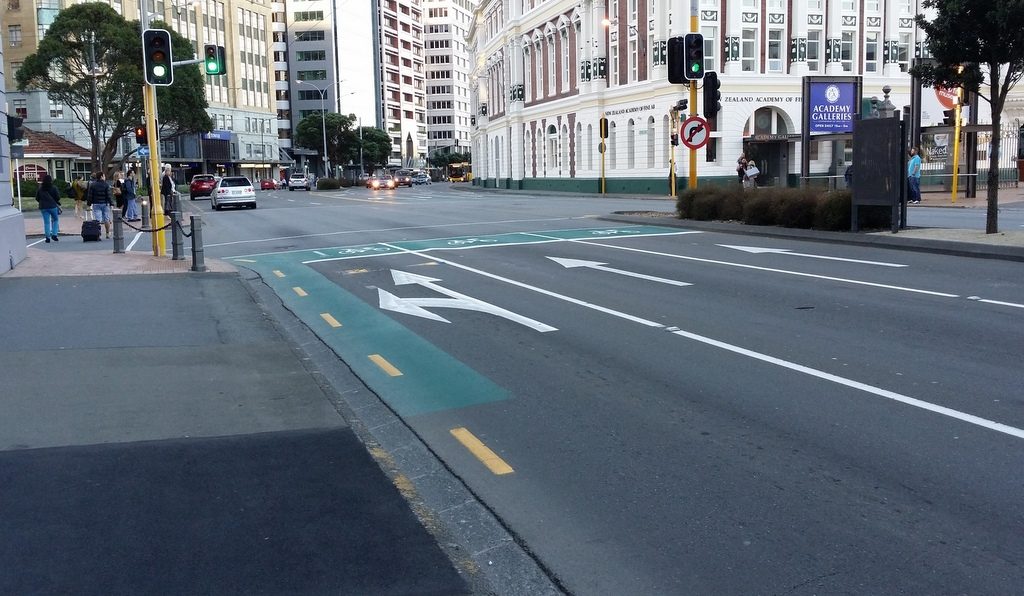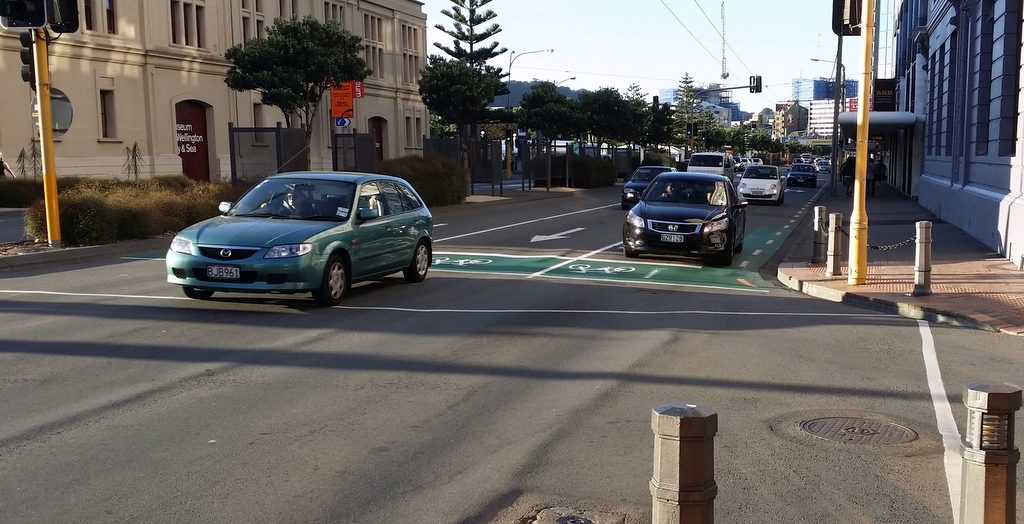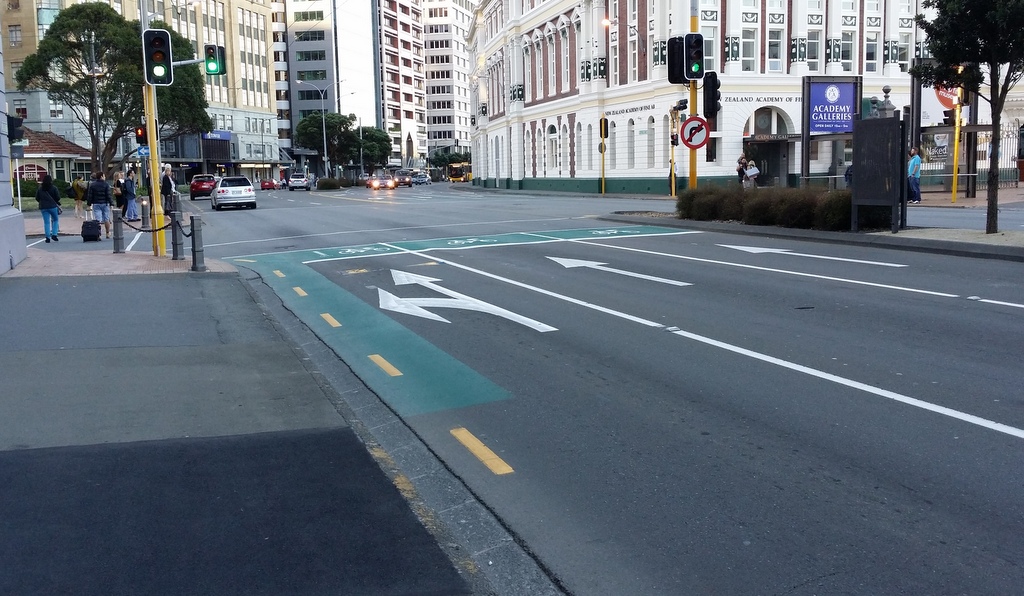So last week I spent most of my time in Wellington (which explains the slight gap in posts). For much of it I was attending the 2014 IPENZ Transportation Conference, but I did also have a little bit of a look around town while I was there.
Traffic engineers and transport planners make up the bulk of the attendees at the annual transportation conference. They tend to get a lot of flak by people when it comes to sustainable transport modes like cycling (or usually the lack of), so you might think that such a conference would just be a giant roads-fest. But actually our current crop of transport professionals are typically a multi-modal bunch, as evidenced by the topics presented at the conference (it doesn’t mean they can always convince the politicians of the merits of these things…). So for example, there were a number of papers presented related to cycling (which you can download), including:
- Managing the risk of cycling on rural roads
- The development of Chch’s Cycle Design Guidelines
- An overview of successful strategies to increase cycle mode share
- Measuring cycling Levels of Service in Wellington
- Transport studies in Auckland to encourage more use of active modes
- Guidelines and principles for Shared Streets/Zones in NZ
- Compliance and acceptance of safer speeds
- Generation Zero’s perspective on the future of urban transport
Wellington’s Mayor (and noted cycling fan) Celia Wade-Brown hosted us at the welcome function last Sunday. Celia has been a recent convert to an electric bike and commented the other night that, instead of the traditional challenges of weather and topography that Wgtn is known for, she now considers the city to be “flat and windless”…

Late last year we told you about some of the recent initiatives starting to happen in Wellington for cycling. Their cycling budget has been trebled to over $4 million a year; heady stuff for the capital. One thing they have started to pop in everywhere are advanced bike boxes at the front of intersections. However a problem with many locations is that there are no cycle lanes actually leading to them, often due to fairly narrow streets. So now Wellington City are trying out strips of green surfacing along the side of traffic lanes, to encourage motor traffic to nudge on over a little to allow a bike rider to squeak up past them. Not enough width to provide a legal cycle lane, so it’s just a “suggestion” that traffic might want to move over and share.

My observations of some of them are that it somewhat works. Not every car shifted over, so it will be luck of the draw whether you’re able to make your way to the front of the queue when everyone is stopped. The fact that it only goes back a couple of car lengths also makes me wonder whether it would work as well if the rush-hour queue is more than a few cars long. But I quite like the thinking behind it, as a way of fixing a tricky retrofit problem. I could imagine a few places in Christchurch where this would also be quite useful (e.g. on the eastern approach to the Kilmarnock/Straven intersection).
What do you think about the “suggestive” cycle space colouring?


Ugh, Really no need for 3 lanes at one intersection in the middle of the CBD. Just need to bite the bullet and get rid of one of the lanes. Maybe keep the Golden Mile for buses, but have a separated cycle route on a parallel road. Especially where there is a motorway 1km away towards the hills, and 6 lane expressway cutting off the water to the other side. Despite their green mayor Wellington at risk of being left behind in cycling by Auckland and Christchurch where things are really started to happen.
One issue I see with the “suggestion” approach lanes is that in some places (such as the first photo) they may imply that a cyclist should stay left when they should be taking the lane.
The stupidity of the planners is evident in both these photographs. WHO in their right state of mind would use the Advanced Stop Box in the rightmost lane of this road! Customhouse & Jervois Quays are 6 lane racetracks for cars. These ASB things don’t make this road any safer or pleasant to ride along. The reality is they are just “green-wash”.
I’m happy to read arguments in favour of them though.
I don’t get the “advanced stop boxes” either as normally when I approach an intersection the traffic is flowing and when the traffic has stopped they are parked on them. The green paint on the left is a useful suggestion I think but it would need to be much longer, there are several streets that could have these. Also something like that in the middle were two lanes diverge would be good.